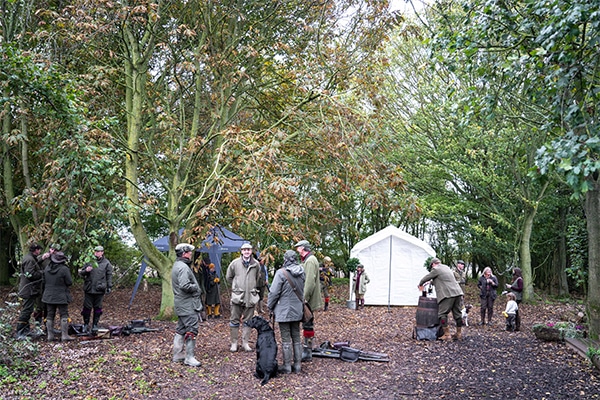
Clubs and syndicates – GDPR
Where shooting clubs and syndicates are concerned there is no definitive answer to the question ‘Do we have to register under the General Data Protection Regulations (GDPR)?
Get information on the legal shooting season for mammals and birds in the UK.
Apply for funding for your project or make a donation today
Comprehensive information and advice from our specialist firearms team.
Everything you need to know about shotgun, rifle and airgun ammunition.
Find our up-to-date information, advice and links to government resources.
Everything you need to know on firearms law and licensing.
All the latest news and advice on general licences and how they affect you.


Home » Gamekeeping » Land management » Reducing herbivore damage in woodland
Healthy, resilient woodlands are vital for reducing the impact of climate change, supporting the recovery of nature and, of course, improving our wellbeing through spending time outdoors.
With government targets to increase woodland cover across the UK, an increased focus on the impacts of woodland herbivores may be needed to enable new woodland to establish, and to improve the condition of existing woodland for nature.
Woodlands in the UK are home to both native and invasive mammal species that can cause negative impacts to trees, woodland plants, and habitats for species including birds and insects.
The mammal species include deer, feral wild boar, squirrels, smaller mammals such as hares, rabbits and bank voles, as well as domestic stock such as sheep. Many of these species are part of a healthy woodland system and at the correct levels their impact can be tolerated.
However, a lack of natural predators means that several species are found at densities which lead to unacceptable damage for both commercial forestry and our native woodlands.
Managing woodland herbivores effectively can reduce damage levels, enhancing tree health and growth, as well as allowing natural woodland regeneration of trees and understorey vegetation.
Damage from herbivores can occur in woodlands of all ages, impacting the health and growth of trees as well as ground vegetation within and beside woodland. Damage can also reduce timber crop value due to abnormal growth patterns and poor timber quality.
Browsing (feeding on buds, shoots and foliage) by larger herbivores such as deer and sheep can prevent seedlings and young saplings from establishing or growing properly, as their leading stems and buds are removed.
Bark damage through stripping, fraying, gnawing and rubbing can be hugely detrimental to both young and mature stands of trees and can leave them more susceptible to pests, diseases and death.
Excessive rooting by boar or trampling by high densities of deer can also destroy ground cover and young plants, leading to bare soil or poor cover for gamebirds and wildlife.
Over time, intensive browsing can lead to woodland structure disappearing, along with the other species which depend on it such as songbirds, dormice and invertebrates.
Complete exclusion or removal of herbivores from woodland can be detrimental to the way the woodland works.
Herbivore management should rather aim to reduce damage to woodlands and ensure the
woodland ecosystem as a whole can function properly. The most effective ways to reduce damage will vary with woodland size and purpose, landowner preferences and the species causing damage.
Damage can be primarily reduced through fencing, the use of tree tubes and guards, and culling.
Fencing can reduce damage by larger herbivores to woodlands or sensitive areas. This can be used as a temporary measure to reduce damage, for example around newly planted trees for the first 5-10 years of growth or after coppicing.
It is an expensive solution and is not always successful, especially where small deer species are concerned.
However, it can be more economical to fence larger areas of newly planted trees rather than using tree guards.
In many instances, fencing is not a practical or financially feasible option and other methods must be used to reduce tree damage.
Fences can be quickly breached by deer which are then difficult to remove from within these enclosed areas.
Fencing may also increase deer pressure in unfenced areas by removing habitat and feed availability from the landscape.
Be aware of scheduled ancient monuments, and areas of archaeological interest when planning fences, the default option being to avoid them.
Smaller fenced areas, in conjunction with effective lethal control, can often be more effective than ring-fencing large areas.

Where shooting clubs and syndicates are concerned there is no definitive answer to the question ‘Do we have to register under the General Data Protection Regulations (GDPR)?

Current government targets aim to increase woodland cover in order to improve carbon capture, connectivity and biodiversity across the landscape.

If your shoot has five or more employees at any one time it is a legal requirement to have a health and safety policy in place.